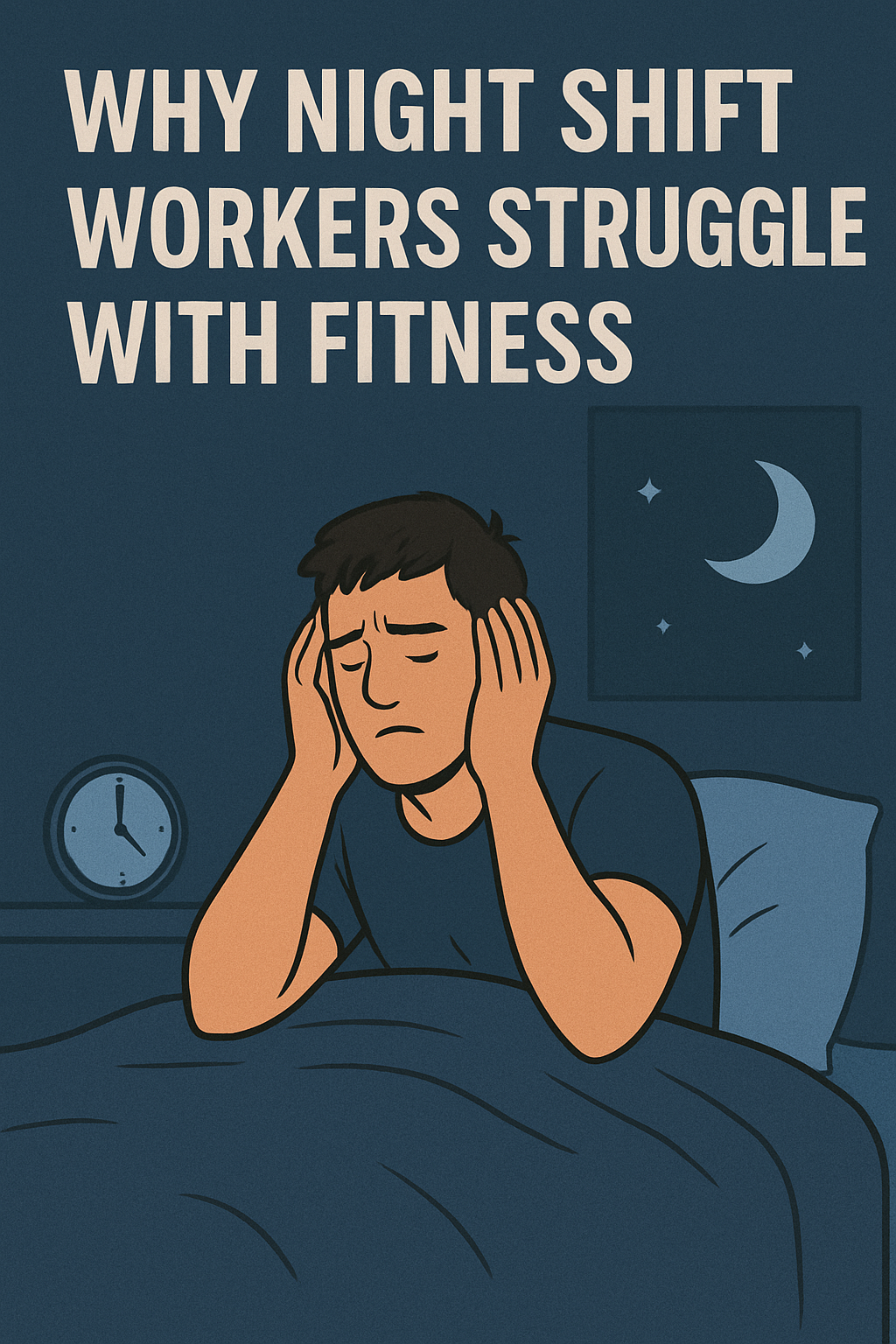How People Working Night Shifts Can Plan a Workout Routine Without Disturbing Their Sleep Cycle
Working night shifts is becoming increasingly common in today’s world, with jobs in healthcare, IT, customer service, logistics, and security requiring employees to stay active during unconventional hours. While this schedule can support a career, it often disrupts sleep patterns, eating habits, and overall health. One of the biggest challenges night shift workers face is finding the right time and method to incorporate exercise into their routine—without compromising their already delicate sleep cycle.
The good news is that with smart planning and a balanced approach, you can successfully manage night shifts while staying fit, active, and well-rested. Let’s dive into how you can create an effective workout routine around your night shifts.
Why Night Shift Workers Struggle with Fitness
Before creating a workout plan, it’s important to understand the challenges:
-
Circadian Rhythm Disruption – Our bodies naturally align with daylight. Night shifts disrupt this biological clock, making energy levels unpredictable.
-
Sleep Deprivation – Most night shift workers struggle to get 6–8 hours of continuous quality sleep.
-
Irregular Meal Timings – Eating late at night or during work hours may lead to digestive issues and poor nutrient absorption.
-
Low Energy & Fatigue – Physical and mental tiredness during or after night shifts often leads to skipped workouts.
-
Limited Time – Balancing family responsibilities, work, and personal time makes it harder to stick to a fitness routine.
Benefits of Exercise for Night Shift Workers
Even with these challenges, exercising regularly can make a massive difference:
-
Improves sleep quality and helps you fall asleep faster.
-
Reduces stress, anxiety, and mood swings caused by night shift fatigue.
-
Boosts energy, strength, and endurance for demanding work schedules.
-
Supports weight management and prevents lifestyle diseases like obesity, diabetes, and hypertension.
-
Enhances mental sharpness, focus, and alertness during shifts.
Best Times for Night Shift Workers to Exercise
Timing is everything when you’re on a night shift schedule. Here are the most effective workout windows:
1. Before Your Shift (Evening or Late Afternoon)
-
Pros: Boosts energy for the night, acts like a natural “wake-up” signal.
-
Cons: Avoid working out too close to your shift start, or you may feel drained.
-
Best For: Strength training, moderate cardio, or HIIT.
2. During Your Shift (If Breaks Allow)
-
Pros: Helps beat fatigue and keep energy up during long work hours.

-
Cons: Work environment may not allow long sessions.
-
Best For: Stretching, short bodyweight circuits, or brisk walks.
3. After Your Shift (Morning Before Sleeping)
-
Pros: Relieves stress built during the shift.
-
Cons: Can make it harder to fall asleep if the workout is too intense.
-
Best For: Light yoga, stretching, or a calming walk.
Pro Tip: Avoid high-intensity workouts within 2 hours of your planned sleep time. Choose gentler activities instead.
Ideal Workout Routine for Night Shift Workers
Strength Training (3 Days a Week)
-
Squats, Lunges, Deadlifts
-
Push-ups, Pull-ups, Bench Press
-
Shoulder Press, Rows, Planks
👉 Focus on compound movements that target multiple muscle groups.
Cardio (2–3 Days a Week)
-
Brisk walking, jogging, or cycling for 20–30 minutes
-
HIIT sessions (short bursts, high effort, 15–20 minutes)
-
Jump rope or stair climbing for quick calorie burn
Flexibility & Recovery (Daily, Even if Short)
-
Yoga stretches
-
Foam rolling
-
Breathing exercises
👉 Helps relax muscles, reduce stiffness, and prepare the body for sleep.
Nutrition Tips to Support Your Routine
Exercise is only half the equation—nutrition plays a critical role in maintaining energy and preventing sleep disruption.
-
Pre-Workout Fuel – Eat a balanced meal with lean protein (chicken, eggs, tofu), complex carbs (brown rice, oats), and healthy fats (nuts, olive oil).
-
Stay Hydrated – Night shifts often cause dehydration, which leads to fatigue. Drink enough water but avoid excessive caffeine.
-
Smart Snacking – Choose fruits, Greek yogurt, protein bars, or roasted nuts over processed snacks.
-
Post-Workout Recovery – Have a protein-rich meal or shake to aid muscle repair.
-
Avoid Heavy Meals Before Sleep – Stick to lighter meals (salads, soups, smoothies) to prevent digestion issues.
Sleep Hygiene for Night Shift Fitness Enthusiasts
Since sleep is already compromised, protecting its quality is vital:
-
Stick to a Schedule: Go to bed at the same time every day, even on off days.
-
Dark & Quiet Room: Use blackout curtains, eye masks, and earplugs.
-
No Screens Before Sleep: Avoid phones or laptops at least 30 minutes before bedtime.
-
Short Naps Help: A 20–30 minute nap before your shift can boost alertness.
-
Limit Stimulants: Cut down on caffeine at least 4–6 hours before bedtime.
Sample Workout Plan for Night Shift Workers
Option 1: Workout Before Shift (Best for Energy Boost)
-
6:00 PM – Wake up, light snack
-
6:30 PM – Strength training (45 minutes)
-
7:30 PM – Post-workout meal
-
9:00 PM – Leave for work
Option 2: Workout After Shift (Best for Stress Relief)
-
7:00 AM – Finish work, light breakfast
-
7:30 AM – Light cardio or yoga (20–30 minutes)
-
8:15 AM – Shower, protein shake
-
9:00 AM – Sleep
Option 3: Split Workouts (Mini Sessions)
-
Quick stretches during shift breaks
-
15-minute HIIT workout before shift
-
Yoga or meditation after shift
Mistakes to Avoid
-
Skipping warm-ups and cool-downs due to lack of time.
-
Doing high-intensity workouts right before sleep.
-
Over-relying on energy drinks or caffeine for workouts.
-
Ignoring nutrition and recovery.
-
Being inconsistent with training due to irregular schedules.
Final Thoughts
Balancing fitness and night shifts may seem tough, but it’s absolutely possible with smart planning. The key is consistency, timing, and listening to your body. Remember, your goal is not just building strength or losing fat, but also protecting your sleep cycle, mental health, and long-term well-being.
A night shift doesn’t mean giving up on fitness—it simply requires a customized routine that respects your unique schedule. With a balanced mix of strength training, cardio, flexibility work, and proper sleep hygiene, you can stay fit, healthy, and energized, no matter what time the clock says.













